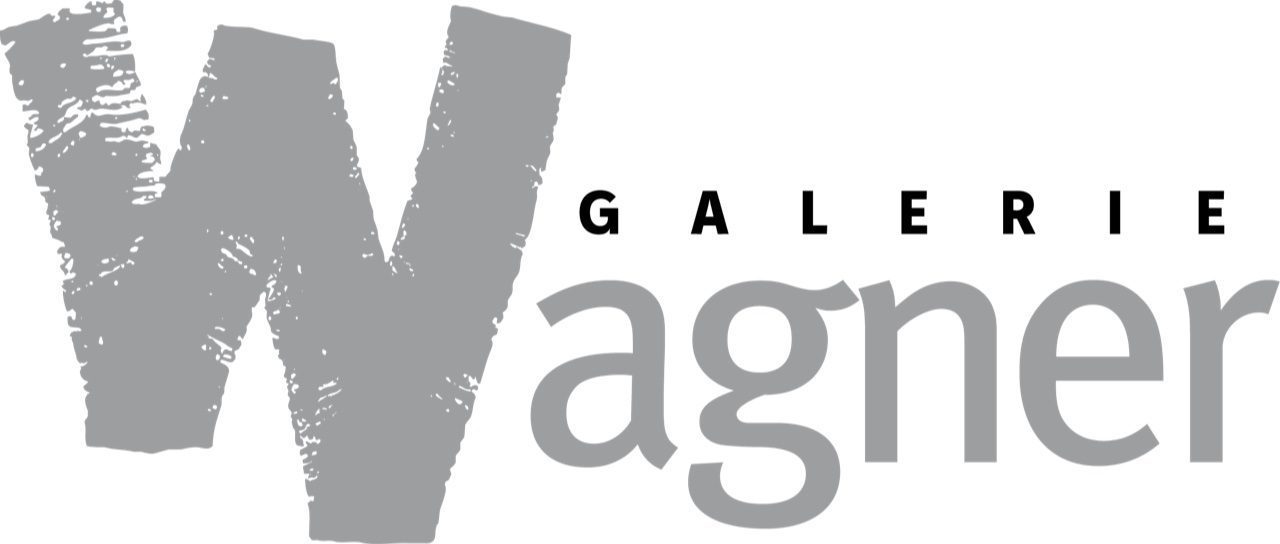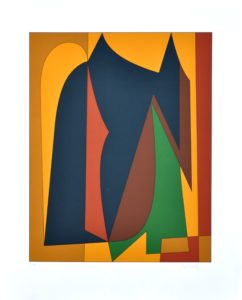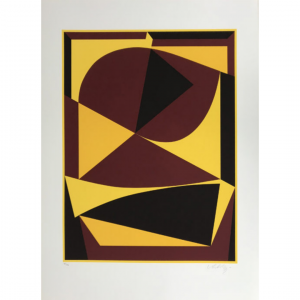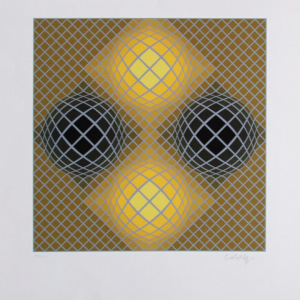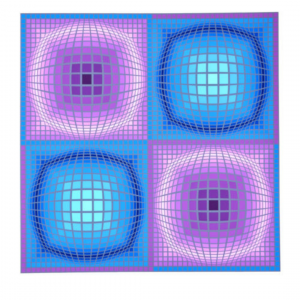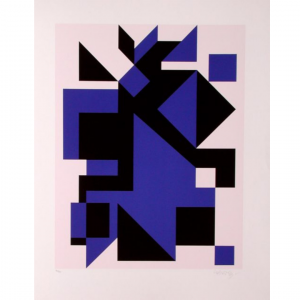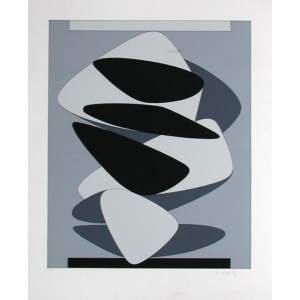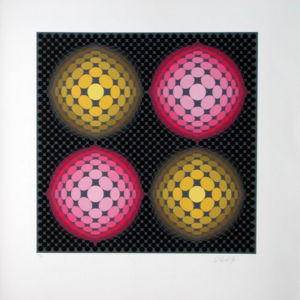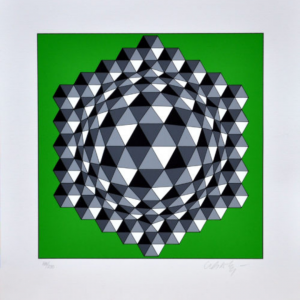
Victor VASARELY
• Born in Pécs, in 1906, in Hungary
1929: Joins the Muhëly, the Bauhaus school in Budapest after two years of medical studies.
• 1930: Settles in Paris after his first solo exhibition in Budapest. He becomes a graphic designer for Havas Publicité, Draeger and later for Dewambez.
• Between 1929 and 1946: Works on the line, the effects of materials, the play of light and shadow and develops his taste for perspective.
• Between 1935 and 1947: Rediscovers painting, particularly the cubists and surrealists, who lead him to a simplification and schematisation of the object.
• Between 1947 and 1958: Discovers the internal geometry of nature and moves towards a resolutely abstract approach.
• Between 1948 and 1958: Plays with the alternation of background and form, juxtaposes areas of contrasting colours laid out in a flat surface, rediscovers the contradictory perspectives of axonometry and the strength of pure composition.
• 1954: First architectural integration in Venezuela.
• 1955: Exhibits at Denise René on the theme of movement and publishes his Manifeste Jaune which sets out the notion of “kinetic plastic”.
• From the 1960s: Invents his plastic alphabet, combining forms and shades of scales with powerful or contrasting tones, developing a method that allows the creation of a universal language understandable by all.
• From 1964 to 1976: He was particularly interested in the cellular structure, where the reliefs are perceived in constant transformation, sometimes in hollow, sometimes in relief. Through works such as “Feny” (1963), “Vega Tek” (1968) and “Vega 200” (1968), he seeks to evoke the elusive universe of galaxies, cosmic pulsations and the biological mutation of the cell.
• 1965: Takes part in the “Responsive Eye” exhibition (New York), which consecrates optical art.
• 1966: Creation of the Vasarely Foundation, which will be recognized as a public utility in 1971.
• 1976: Creation of the Architectural Centre in Aix-en-Provence and the Pécs Museum.
• 1982: Opens the Vasarely Centre in Oslo.
• 1986: Inaugurates the Budapest Museum.
• 1997: Dies in Annet-sur-Marne
« The future is taking shape with the new geometric, polychrome and solar city. Plastic art will be kinetic, multidimensional and communal; abstract for sure and close to science. »
Victor Vasarely
Known to the general public for having modernised the logo of the Renault brand in the 1970s, Victor Vasarely is a very special artist in the history of 20th century art for having created a new trend: optical art. Developing his own model of geometric abstract art, the Hungarian artist, who became a French citizen in 1961, uses a minimal number of shapes and colours. Vasarely assimilates, for example, the lozenge and the ellipse to deformations of the square and the circle involving space and movement.
He calls his works based on programmable permutations of coloured shades « algorithmic ». He plays on the shadow effects given by these shades to force the retina to create its own image. The variation manifests itself in the creation of series spread out over time. These series are the result of the same plastic research or correspond to the successive realisations of the same prototype. The notion of repetition is related to the mathematical notion of symmetry. In a Vasarely painting, symmetry is most often expressed along several axes: vertical, horizontal and diagonal. Most of Vasarely’s works use many mathematical resources. He chooses usual shapes and figures of the plane (squares, parallelograms, rhombuses, circles, hexagons…) to make volumes appear (spheres, parallelepipeds, cubes…) and thus give relief to his drawings. He also uses specific geometrical processes such as symmetry (axial with different types of axes, central), series, accumulation of shapes… and he enjoys distorting perspectives in order to obtain optical effects.
He is interested in physics, architecture and industry and develops his universal language. His compositions become more complex, compositions where geometric elements merge, interlock, permute and assemble to come closer to the cellular structure.
His work is very coherent, from the evolution of his graphic art to his determination to promote a social art, accessible to all. Desiring to take art out of the museums and into the public space, Vasarely embarked on a vast process of secularization: he redefined the modes of conception and production of his works in order to allow for a larger social diffusion. Unconcerned with private property, the artist challenged the idea of a single object, and allowed for an art that could be multiplied endlessly.
Thus, we find him on the books of the « Tel » collection of Gallimard, on the cover of David Bowie’s « Space Oddity » in 1969, in a mural in the Montparnasse train station, on Michel Drucker’s set, in the cinema in La Prisonnière by Henri-Georges Clouzot or Peur sur la ville by Henri Verneuil…
Public collections (selection):
Main exhibitions (selection):
2019 : « Le partage des formes », Centre Georges Pompidou, Beaubourg, Paris, France
2018 – 2019 : Victor Vasarely, « Dans le labyrinthe de la modernité », Städel Museum Frankfurt, Francfort-sur-le-Main, Allemagne
2013 : « Cercles et carrés », Hors les murs, Centre Pompidou Mobile, France
2010 : Messmer Foundation, Riegel, Allemagne
2009 – 2010 : Victor Vasarely + 50 Jahre konstruktive Kunst in Paris à la kunsthalle messmer, Riegel am Kaiserstuhl, Allemagne
2009 : Marcel Peltier et Victor Vasarely, Château de Vascœuil, France
2009 : Stattgalerie Klagenfurt, Autriche
2008 : Triennale de Milan, Italie
2007 : Colombus Museum of Art, Ohio, Etats-Unis
2006 : Kunstmuseum Zürich, Suisse
1989 : Art Expo New York12, Jacob K. Javits Convention Center, États-Unis
1973 : Fresque, château d’eau à Dieppe, France
